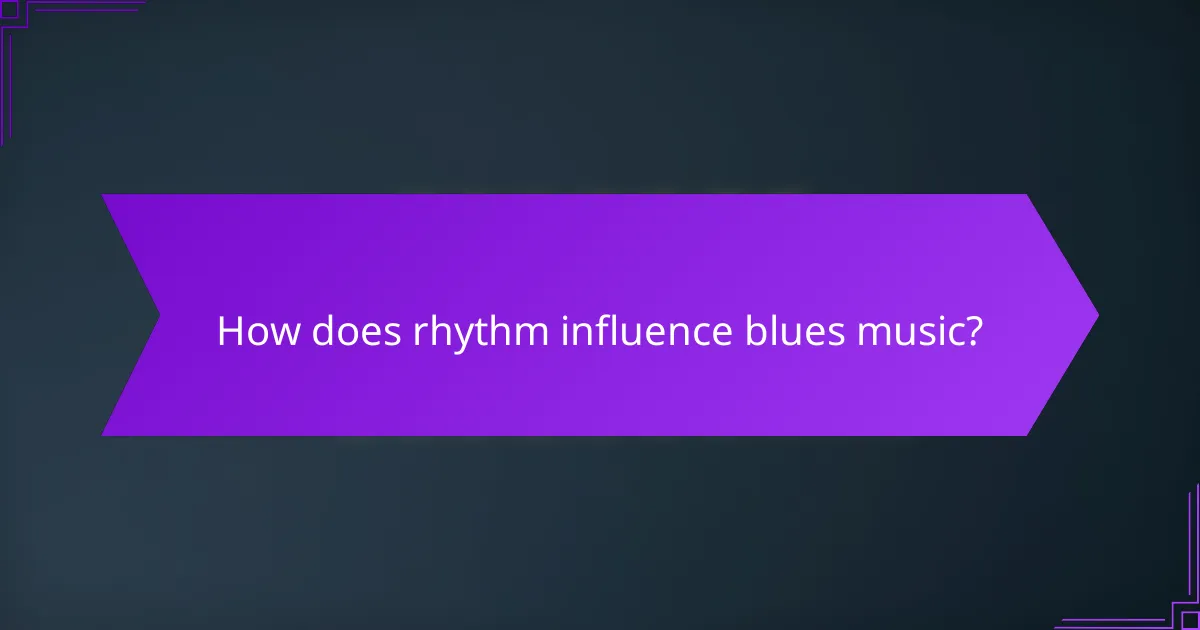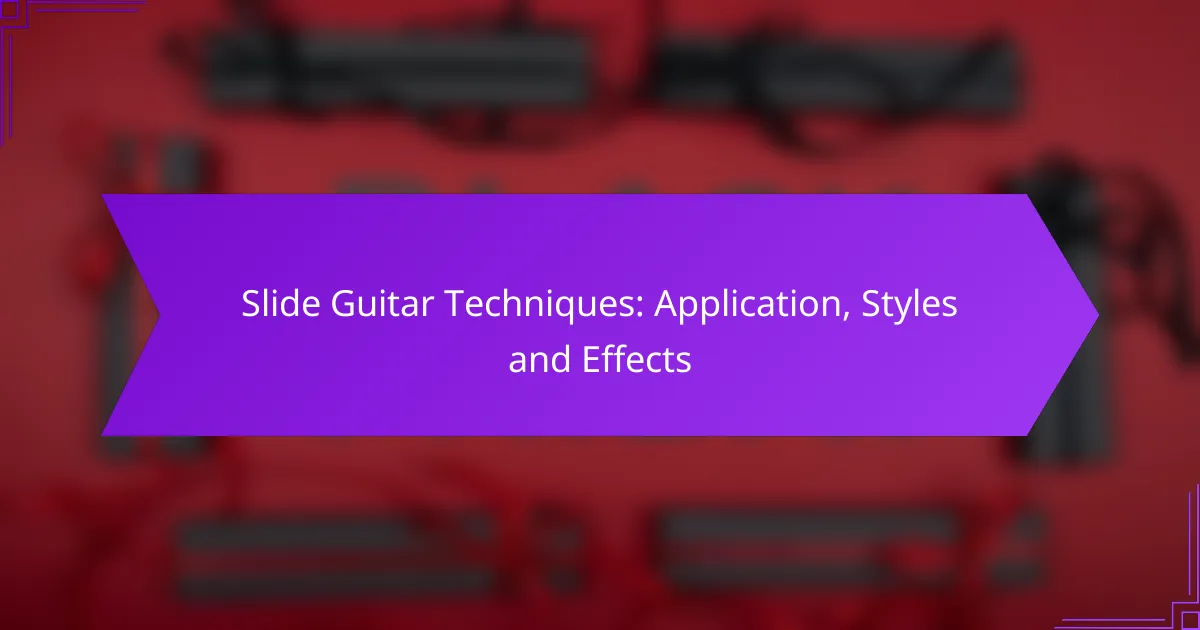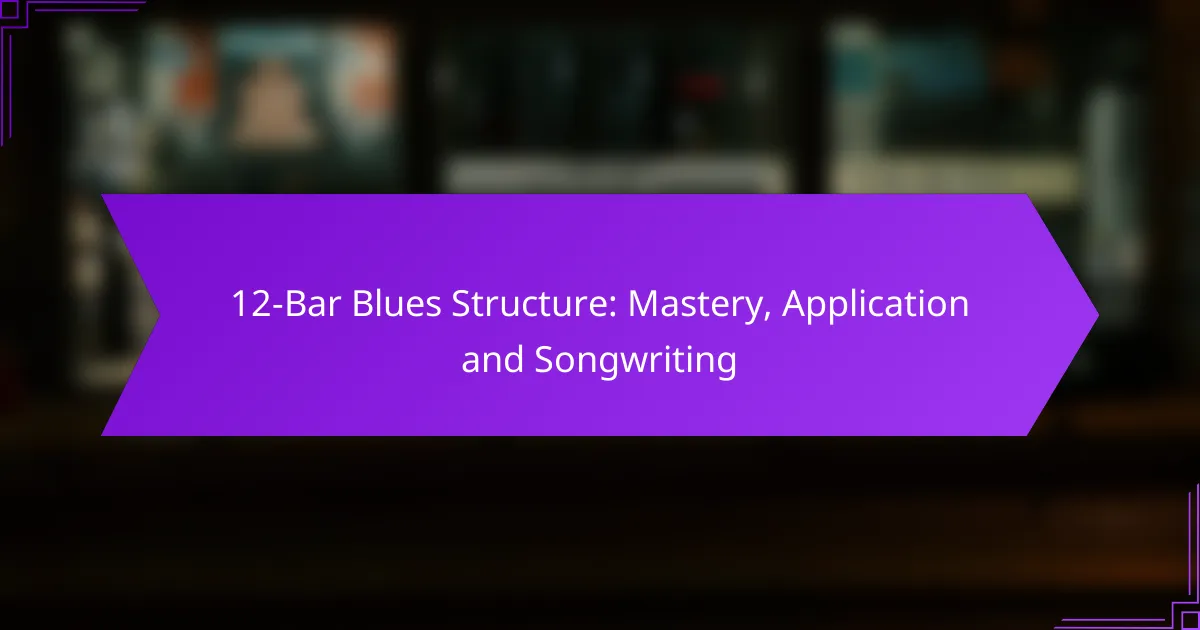Rhythm is a fundamental element in blues music, shaping its emotional expression and overall feel. Mastering timing involves understanding specific rhythmic techniques, such as swing feel and syncopation, which enhance the genre’s unique character. By practicing structured methods and analyzing influential recordings, musicians can develop a strong sense of rhythm that deepens their connection with the music and their audience.

How does rhythm influence blues music?
Rhythm is a fundamental element in blues music, shaping its emotional expression and overall feel. It dictates the pace and flow of the music, influencing how listeners connect with the performance.
Creates emotional depth
Rhythm contributes significantly to the emotional depth of blues music. By varying tempo and syncopation, musicians can evoke feelings of sadness, joy, or tension. For example, a slow, steady beat can enhance a melancholic theme, while a faster rhythm might convey excitement or urgency.
Musicians often use techniques like swing and shuffle to add complexity to the rhythm, deepening the emotional impact. This allows performers to express personal stories and experiences, making the music relatable and poignant.
Establishes groove
The groove in blues music is established through a combination of rhythm and timing, creating a compelling foundation for the performance. A strong groove invites listeners to engage physically, often leading to dancing or tapping along. This rhythmic consistency is crucial for maintaining the energy of a live performance.
Musicians can create a groove by emphasizing backbeats and using polyrhythms. For instance, a drummer might play a steady kick drum pattern while the snare emphasizes the second and fourth beats, creating a dynamic interplay that captivates the audience.
Enhances improvisation
Improvisation is a hallmark of blues music, and rhythm plays a key role in this spontaneous expression. Musicians often rely on established rhythmic patterns to guide their improvisation, allowing for creativity within a structured framework. This balance helps maintain coherence while encouraging individual expression.
Practicing with a metronome or playing along with backing tracks can help musicians develop their timing and rhythmic skills. By understanding how different rhythms interact, performers can enhance their improvisational abilities, leading to more engaging and dynamic performances.

What are effective techniques for mastering timing in blues?
Mastering timing in blues involves understanding and applying specific rhythmic techniques that enhance the genre’s unique feel. Key methods include utilizing swing feel, incorporating syncopation, and practicing with a metronome to develop a solid sense of timing.
Use of swing feel
Swing feel is a defining characteristic of blues music, where the rhythm creates a laid-back groove. This technique involves playing the first note of a pair slightly longer and the second note shorter, creating a “long-short” pattern that adds a distinctive bounce to the music.
To practice swing feel, try playing eighth notes in a way that emphasizes the off-beat. For example, instead of playing straight eighths, aim for a triplet feel where the first note is held longer. Listening to classic blues recordings can help internalize this rhythmic style.
Incorporating syncopation
Syncopation is the technique of placing emphasis on beats or parts of beats that are typically unaccented, creating a surprise element in the rhythm. This can be achieved by playing notes off the main beats, which adds complexity and interest to your playing.
To effectively incorporate syncopation, start by identifying the strong beats in a measure and then experiment with placing accents on the weak beats. For instance, try playing a melody that emphasizes the “and” of the beat, which can create a compelling rhythmic tension.
Practicing with a metronome
Using a metronome is crucial for developing precise timing in blues. It helps musicians maintain a steady tempo and reinforces the internal clock necessary for executing swing and syncopation effectively. Set the metronome to a moderate tempo and gradually increase the speed as you become more comfortable.
When practicing, focus on playing along with the metronome while incorporating swing and syncopation. Start with simple patterns and gradually add complexity. Avoid the common pitfall of relying solely on the metronome; instead, use it as a tool to enhance your natural timing and feel.

How can blues musicians improve their timing?
Blues musicians can enhance their timing by incorporating structured practice methods, analyzing influential recordings, and engaging in collaborative playing experiences. These approaches help develop a strong sense of rhythm and improve overall musicality.
Regular practice with backing tracks
Using backing tracks during practice sessions allows musicians to focus on timing while playing along with a steady rhythm. This method helps internalize the beat and develop a consistent groove. Aim to practice with various tempos and styles to adapt to different musical contexts.
Start with slower tracks to ensure accuracy, then gradually increase the tempo as your confidence grows. Consider using a metronome alongside backing tracks to reinforce timing precision.
Analyzing recordings of blues legends
Listening to and analyzing recordings of renowned blues artists can provide valuable insights into effective timing techniques. Pay attention to how these musicians use syncopation, swing, and phrasing to create a compelling rhythm. Take notes on specific moments that stand out and try to replicate them in your own playing.
Focus on a few key recordings and break them down section by section. This focused approach allows you to grasp the nuances of timing and apply them to your own style.
Participating in jam sessions
Engaging in jam sessions is an excellent way to practice timing in a live setting. These informal gatherings provide opportunities to play with other musicians, which can enhance your ability to stay in sync with different players. Embrace the spontaneity of these sessions to develop your adaptability and timing skills.
When participating, listen closely to your fellow musicians and adjust your timing accordingly. This collaborative experience can reveal areas for improvement and help solidify your rhythmic foundation.

What are common timing mistakes in blues?
Common timing mistakes in blues include overplaying notes, inconsistent tempo, and neglecting rests. These issues can disrupt the groove and emotional impact that blues music aims to convey.
Overplaying notes
Overplaying notes occurs when musicians add excessive embellishments or play too many notes in a short span. This can muddy the sound and detract from the core melody. To avoid this, focus on playing fewer, more expressive notes that enhance the overall feel of the piece.
A practical approach is to limit yourself to a specific number of embellishments per phrase. For instance, aim for one or two tasteful bends or slides instead of multiple rapid-fire notes.
Inconsistent tempo
Inconsistent tempo refers to fluctuations in speed that can confuse listeners and disrupt the flow of the music. Maintaining a steady tempo is crucial for creating a cohesive sound. Use a metronome during practice to develop a reliable sense of timing.
When performing, consider using rhythmic cues from other band members to stay in sync. If you notice tempo changes, try to identify the cause and address it, whether it’s nerves, distractions, or lack of preparation.
Neglecting rests
Neglecting rests can lead to a cluttered sound and diminish the emotional impact of a performance. Rests are essential in blues as they create space and allow the music to breathe. Incorporating rests strategically can enhance tension and release in your playing.
To practice this, try counting beats and intentionally leaving spaces between phrases. A good rule of thumb is to include a rest after every few notes to maintain a balanced rhythm and give listeners time to absorb the music.

How does timing affect the overall feel of a blues performance?
Timing is crucial in blues music as it shapes the groove and emotional impact of a performance. A well-executed timing can create tension and release, enhancing the listener’s experience and engagement.
Shapes audience perception
Timing directly influences how the audience perceives the rhythm and flow of a blues performance. A laid-back timing can evoke a relaxed, soulful vibe, while a more aggressive timing can energize the crowd and create excitement.
Musicians can manipulate timing through techniques like swing or shuffle, which alters the expected beat patterns. This variation can lead to different emotional responses from the audience, making them feel more connected to the music.
Influences dynamics
The timing of notes and rests in blues music affects the dynamics of a performance. Musicians can use timing to build intensity or create moments of quiet, allowing for dramatic contrasts that capture attention.
For example, delaying a note slightly can create a sense of anticipation, while playing ahead of the beat can inject urgency. Understanding these dynamics helps musicians craft a more compelling performance.
Affects emotional delivery
Timing plays a vital role in conveying emotions in blues music. A slow, deliberate tempo can express sadness or longing, while a faster tempo might convey joy or celebration.
Musicians should be mindful of how their timing choices reflect the song’s emotional content. Experimenting with different tempos and rhythmic variations can enhance the emotional delivery, making the performance resonate more deeply with the audience.

What role does technology play in timing for blues musicians?
Technology plays a significant role in timing for blues musicians by providing tools that enhance precision and creativity. Devices such as metronomes, digital audio workstations (DAWs), and loop pedals help artists maintain consistent rhythms and explore complex timing variations.
Metronomes and Timing
Metronomes are essential tools for blues musicians, helping them develop a strong sense of timing. By setting a steady beat, musicians can practice their phrasing and syncopation, which are crucial in blues music. Regular practice with a metronome can improve timing accuracy, making performances more polished.
Digital Audio Workstations (DAWs)
DAWs allow musicians to record, edit, and manipulate their music with precision. They provide features like quantization, which can correct timing errors, and loop functions that enable experimentation with different rhythmic patterns. Musicians can layer tracks to create rich textures while maintaining tight timing.
Loop Pedals and Live Performance
Loop pedals are increasingly popular among blues musicians for live performances. They allow artists to record and layer sounds in real-time, creating complex arrangements on stage. This technology encourages improvisation while ensuring that the timing remains tight, enhancing the overall musical experience.



